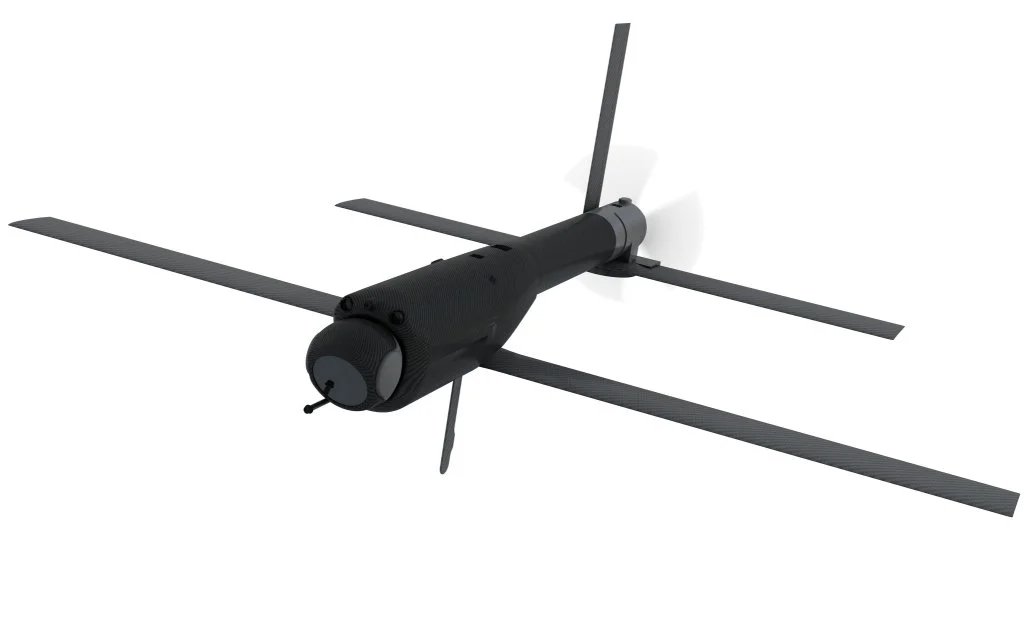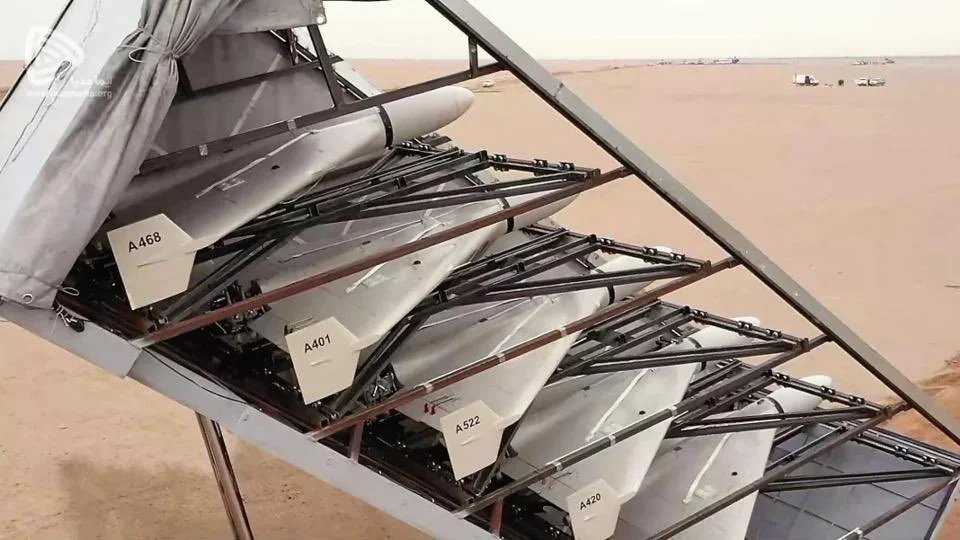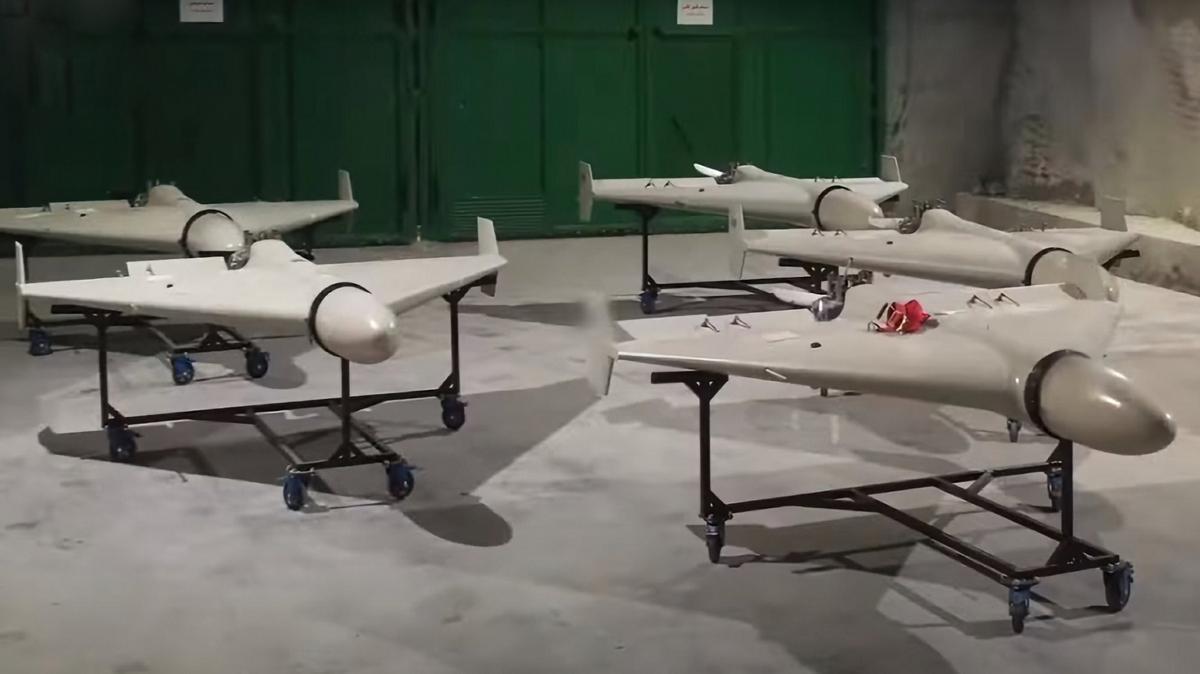The use of Iranian Shahed-136 drones has become widespread in the Russian army. They fall on cities or overwhelm air defences: the AFU (Armed Forces of Ukraine) shoot them down, waste expensive anti-ballistic missiles (ABMs) and expose themselves against the next wave of “Iskanders” and “Kalibrs”.
What is the first question one asks when one hears that the “world’s second-strongest army” is buying Iranian drones en masse and wants to buy as many as 2,400?
It should go something like: “How come Russia doesn’t even have them?”
It’s clear why Russia can’t produce the American Switchblade 600 or the Israeli IAI Harpy — it simply doesn’t have the technology. But a rudderless Iranian piece of junk with a motor like a chainsaw and a GPS antenna ordered off the Internet for $10? Why was Russia’s military-industrial complex incapable of doing something as simple as that?
We’ll try to answer that question below — a very interesting and non-trivial question indeed. After we describe what a Shahed-136 is, we’ll try and understand why even Russia avoided producing it, and why the idea didn’t even occur to Russian generals.
So, what is the Shahed-136?
All the information written below was collected from military and expert sources by the author — bit by bit. Some of the experts I’ll quote, some of them I was requested not to. Not much information is available about the Shahed-136 so far, and the details of the descriptions below may need clarification, but the general picture is clinically clear.
It’s worth remembering that the Shahed is assembled like a Lego set — that is, there could be something missing in the initial configuration, but if you really needed something, you could add it in later.
So, what is the Shahed-136? It’s a loitering munition, aka a “kamikaze drone”, carrying a warhead up to 40 kg, with a range of up to 2 thousand kilometres (according to the Iranians), and a small piston engine “borrowed” from the German Limbach L550E. The engine is economical, consuming little fuel (hence the long distance), and screaming like a chainsaw, which is why the drone usually chooses to fly over busy highways (where they’re hard to be heard) or rivers (where there is no one around to hear them). The Shahed also flies in swarms — these drones are launched from their perches five at a time, and can even be launched 10 or 20 at a time.
The drone navigates using a cheap civilian GPS coupled with a cheap inertial reference system. There are a lot of inaccurate legends circulating about GPS these days. For example, one of my sources thought that the drone uses cheap GPS and “hits off target as the Americans knocked out the GPS over Kyiv”.
It would therefore not be out of place to digress and explain how GPS systems work today.
For starters, the classic “GPS orientation” no longer exists. These days, satellites belonging to four global positioning systems hover above almost any point of the Earth’s surface. These are the American GPS, the European Galileo, the Chinese Beidou and the Russian GLONASS, with the latter working perfectly over Ukraine. “Any system, the dumbest system available on the market usually uses a signal from all four [systems] — that is, from about 50 satellites,” says Sergei Podshivalov, senior director at California-based Broadcom, which specialises in chips for global positioning systems.
Support independent journalism
Accordingly, all the scary stories about “the Americans” being able to “switch off the GPS” are a thing of the past. It’s possible to jam a satellite signal with electronic warfare. It makes no sense to “turn off the GPS” selectively — any chip will continue to use Beidou, Galileo and GLONASS to navigate. We’re not in the 1990s.
“I looked at the pictures of the downed Shaheds,” says Sergei Podshivalov, “and I saw as many as five GPS antennas there. Four white ones in the form of 2x2 grids and one black one. The white ones are most likely the antennas of the ADU (Altitude Determination Unit). These four antennas determine the angular position of the drone in the air (roll, pitch and yaw angles) and the black antenna is connected to a receiver which determines the spatial position.”

Protesters in front of the Iranian embassy in Kyiv following the strikes by Shahed-136 drones. Photo: Oleksii Chumachenko / Getty Images
Sergey Podshivalov found a study by Professor Alireza Ardalan of Tehran University on this very problem. “You can see from this study that their minds are good, they know all the Western achievements and they’re thinking correctly,” Podshivalov says.
The black antenna costs about $10 on Alibaba (a Chinese e-commerce website — translator’s note), and Podshivalov approximates the cost of “white” antennas as $100 apiece. “Judging by the look of the antennas,” he says, “they used civilian GNSS receivers of standard accuracy.”
That’s why they don’t hit their intended targets. For precision targeting, like GMLRS missiles, you need a military GPS and a powerful on-board computer taking a lot of fine details into account: where in the sky relative to the receiver each satellite is, the thickness of the atmosphere over that spot, solar activity, air temperature, etc. (all of which affect the electromagnetic delay).
“All this adds up to a deviation of tens of metres,” says Sergei Podshivalov. “Improving the accuracy from tens of metres to a metre or better requires highly accurate atmospheric and orbital models. These parameters have to be calculated and loaded just before the drone launch or broadcast during the flight. All of this requires a very serious ground and airborne infrastructure.”
As a result, we have the Shahed flying 800 km from Crimea to Kyiv, aiming at the Ukrenergo building and hitting a residential building across the street.
So, the Shahed-136 knows how to fly long distances in swarms according to inaccurate GPS signals and hits where it can. What else can it do?
In short, nothing.

Switchblade 600 unmanned aerial vehicle. Photo: Janes
Normally, a barrage munition is radio-controlled by the operator. The Switchblade 600, controlled by an operator, flies 80 km, has a head like the Javelin and hits armoured vehicles on the battlefield. It is now used en masse by the AFU. The Israeli Harop flies up to 1000 km, is operator-controlled and, due to its electro-optical sensors, can hit anything: air defences, command posts, or buses with Armenian soldiers in Nagorno-Karabakh.
The Shahed-136 in its standard version has no operator. “Any control channel is valid for about 150 km without a satellite, it’s blocked by interference beyond that,” reminds military expert Pavel Luzin. And Iran has no satellites of its own, so this drone is essentially deaf — it cannot “hear” commands.
It’s also blind — it doesn’t have a camera, which is a unique case for drones. No optical guidance system either. A good optical guidance system needs a large bank of pictures of the intended targets, and a powerful processor. The drone compares the pictures loaded into its memory with what it sees and selects a target. All of this is expensive and consumes a lot of power. The Shahed doesn’t have that.
It is often mentioned in the media that the Shahed may have an infrared targeting head, but some of my sources claimed that they hadn’t seen such Shaheds in person, while others strongly doubted that information. The fact is that the infrared head is usually used to track moving targets. For instance, a moving tank with a working engine emits heat, making it a valid target for a missile. But the Shahed isn’t used on moving targets. Good infrared seekers are also expensive and energy-consuming — they need to be cooled, preferably with liquid nitrogen.
Support independent journalism
All independent media have been banned in Russia which makes our work not only challenging but outright dangerous. We need your support.
The Shahed may very well have a passive radar seeker, which is designed to defeat air defences — but there’s an important detail here. Not a single air defence complex has yet been hit by the Shaheds in Ukraine. “They just fly too slowly,” says military expert, reserve colonel and AFU pilot Roman Svitan, “even taking into account that they fly low, any anti-missile weapon they fly at will hit them before they hit the air defences.”
The trade-off here isn’t equal. The Shahed costs $20,000, while an anti-ballistic missile can cost several hundreds of thousands of dollars. The Shahed can’t hit an air defence complex, but it can force an expensive and non-renewable missile on itself, which then won’t be there to take down a Kalibr or Iskander.
In Odesa, the Shaheds have been a veritable terror, knocking out all the warehouses along the sea.
The Shaheds systematically hit warehouse after warehouse — some started detonating and some were empty.

Photo: Twitter
How did they do it? Theoretically, there are two possibilities. Or they aimed — with an active radar homing head — at the iron roof cladding. This was the assumption made by some of my sources. But Pavel Luzin thinks that the matter is even simpler. “There could have been a spotter with an iPhone passing near the warehouses and transmitting coordinates,” he says. “The fact that the Shaheds flew into the iron roofs…well, warehouses usually have iron roofs”.
After numerous inquiries, I can confirm that Luzin is right. To my knowledge, no guiding systems were found in any Shahed — neither infrared, nor optical, nor radar — neither in Kyiv, nor in Odesa.
Let’s sum up. What does the Shahed-136 represent, taking into account the above-mentioned technical characteristics?
In short,
it’s a weapon for mass terrorist acts against civilians. It’s a deaf, dumb, blind — and airborne — suicide belt.
In that sense, its name, the Shahed (“Shaheed” denotes a martyr in Islam — translator’s note), is quite accurate.
Most barrage munitions are used on the front line. But the Shahed-136 can’t be used there. Firstly, it can’t hit moving targets. Secondly, on the front line — that is, where there are armed men — it will be taken down immediately, as it’s a slow-moving (185 km/h), low-flying and relatively large (3.5 m long, 2.5 m wingspan) target.
It can be shot down not just with anti-aircraft guns, but with a simple hunting bow. As there’s an absence of bows on the Ukrainian front, that hypothesis is, of course, difficult to verify. However, in a duel between William Tell (a Swiss folk hero and expert crossbow marksman — translator’s note) the Shahed-136, I’d bet on William Tell. This is a munition that isn’t intended to be used against an armed opponent, as any opponent armed with something more long-range than a club will shoot it down.
Besides, the Shahed-136 won’t solve anything on the front line. Its payload is up to 40 kg — as much as a 155mm M107 shell. In April and May, Russia spent 40-50 thousand projectiles on the Ukrainian front per day. Both sides are now each using 10,000 shells a day. Let’s say you launch 20 drones at the front line. Blind, deaf, devoid of electronic and infrared guidance — playing the role of de facto unguided projectiles. How much of that is from conventional projectiles? 0,05%. How are they different? See above: unlike a conventional projectile, they can be shot down.
Does all this mean that the Shahed is a failed design?
Not at all.
The Shahed-136 is a superbly successful and super-efficient design in its class — a class of terrorist weapons industrially built for the deliberate purpose of attacking civilians.
Its blindness, deafness, idiocy and low cost are its advantages, not its flaws. The Shahed-136 is as cheap as dirt. There’s a lot of them. Like a swarm, it charges in numbers. Need to hit a specific target? Send twenty of them, ten will be shot down, nine will miss, one will hit. Want to create panic? Even better. On the front line, it’s completely useless. On the home front, it’s unstoppable.
That’s why Iran came up with the idea of producing it. Neither the US, nor Israel, nor France could come up with the idea of producing a blind, dumb flying suicide belt. That’s why even Russia hasn’t produced anything like it. The use of Shahid-136 is a terrorist tactic, and “terrorism” isn’t a metaphor here, but a dry tactical reality.
Once again.
The Shahid-136 is capable of performing only two tasks. The first is to strike civilian targets to create terror and panic. The second is to saturate the enemy’s air defences. To force the enemy to waste expensive missiles on the Shaheds, so that he won’t have anything left to intercept the next wave of high-precision missiles with.
I would suggest the following among the measures to combat these drones. I would propose that the UN ban the use of kamikaze drones against civilians — in the same way that the use of petal mines or cluster munitions are banned. This would automatically render the production of these drones meaningless (as they are on the front line), and would equate it with terrorism. Which it is, if one puts value judgments aside and looks at it purely from a technical point of view.
Join us in rebuilding Novaya Gazeta Europe
The Russian government has banned independent media. We were forced to leave our country in order to keep doing our job, telling our readers about what is going on Russia, Ukraine and Europe.
We will continue fighting against warfare and dictatorship. We believe that freedom of speech is the most efficient antidote against tyranny. Support us financially to help us fight for peace and freedom.
By clicking the Support button, you agree to the processing of your personal data.
To cancel a regular donation, please write to [email protected]

